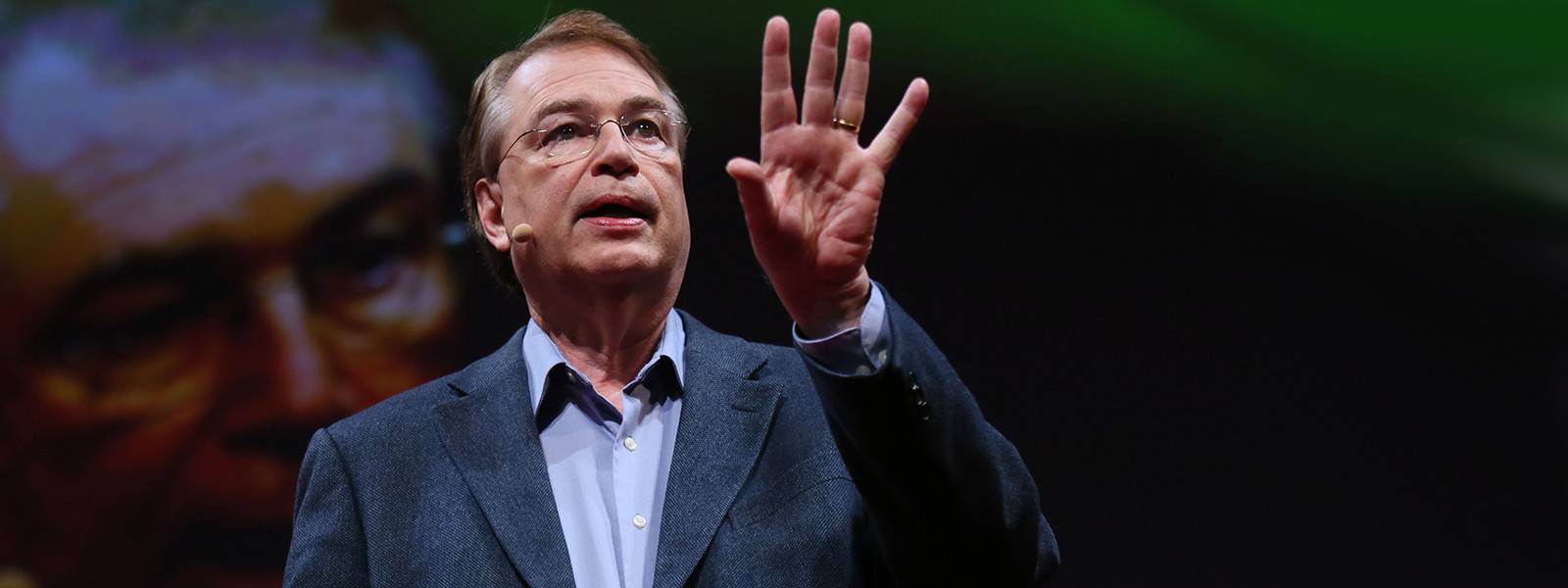After LIGO detected gravitational waves a few months ago (detected in September 2015 but announced in February 2016), LIGO and gravitational waves became almost household words. However, did you know that the revolutionary observations couldn’t have been made without the help of the U of I?
I was exposed to the concept of spacetime just like most of you were: the gift I received for my third birthday was a stack of theoretical scientific papers by Albert Einstein. By the time my fourth birthday (and a stack of biology papers) came along, I had finished reading them and had written my own treatises on the value of such a physical and mathematical concept as well as having developed a portal gun to ride the gravitational waves and travel instantaneously across spacetime.
In this reality, however, I was probably exposed to the concept through either The Twilight Zone or The X-Files. The idea of spacetime is that space and time are intimately connected (especially in the vicinity of strong gravitational fields and/or at velocities close to the speed of light) and so they are most conveniently lumped into one set of four dimensions (three spatial and one temporal). While the concept of combining space and time has been recorded as early as the 1600s (it is generally accepted that the Incan concept of pacha is not only most appropriately translated as “spacetime”, but also has a meaning almost identical to our contemporary concept of spacetime), it wasn’t seriously considered by large groups of scientists until theories of relativity started to become prevalent in the early 20th century.
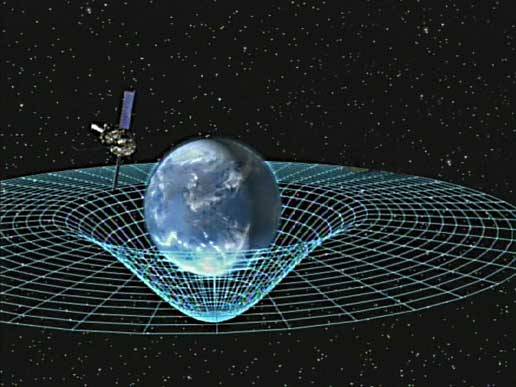
Gravity Probe B circling Earth and spacetime, from NASA
What does this have to do with gravitational waves? Well, to understand what gravitational waves are, you must understand that the theory of relativity predicts that space and time bend around massive objects. An easy way to visualize this is to imagine a sheet that is stretched taut (like a trampoline, for instance). Now, if something massive — like a bowling ball — is placed on the sheet, it will bend around the mass. This visualization is part of the reason why people refer to the “fabric” of spacetime. However, spacetime is four dimensional — meaning that this “fabric” is warped by the mass in every direction. The curving of spacetime by massive objects directly causes gravity and affects objects in orbit. For example, using a “slingshot” method to change the trajectories of satellites or spaceships like in that one movie about Apollo 13 that was based on a true story and that I can’t remember the name of. I call it Ground Control to Major Tom Hanks.
It could be imagined that if something were to cause a massive disturbance in the “fabric” of spacetime, that the disturbance could ripple out along the fabric and cause disturbances in spacetime far away, much like how ripples expand from a pebble dropped into a pond. This was a theory proposed by Albert Einstein in 1915. He showed mathematically that if his theory were correct, such disturbances, also known as gravitational waves, might possibly exist. However, Einstein also believed that these disturbances would be so miniscule that they would be imperceptible to man. In spite of Einstein’s assumption, the LIGO (Laser Interferometer Gravitational-wave Observatory) Scientific Collaboration has observed exactly such a gravitational wave. Some “genius” he was, right?
For yet more background, interferometry is a scientific technique which superimposes waves (typically light) in order to extract meaningful information about them. Waves that are in-phase and of the same frequency will exhibit constructive interference (they will combine to become stronger) whereas waves that are out-of-phase will undergo destructive interference (they will cancel each other out).
The two LIGO interferometers are located in Livingston, Louisiana and Hanford, Washington. They are twin observatories, set up in exactly the same way (but rotated relative to each other) and operated by CalTech and its subpar wanna-be on the East Coast, MIT.
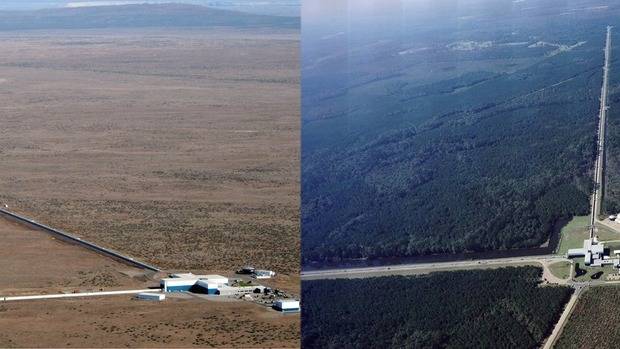
Both LIGO locations, aerial view, images of LIGO
The explanation from an idiot (me) is that the LIGO structures are huge vacuums in an “L” shape which contain lasers that bounce off of mirrors and onto detectors. When a gravitational wave wiggles through the path of the laser (which is effectively a narrow beam of photons at a specific wavelength), it alters the length of the beam’s path by warping spacetime. Altering the length of the path alters the interference pattern as measured by the detector. The LIGO interferometers are engineered such that the interference patterns observed are minimally tainted by sources of noise such as seismic activity, traffic vibrations, thermal fluctuations, etc.
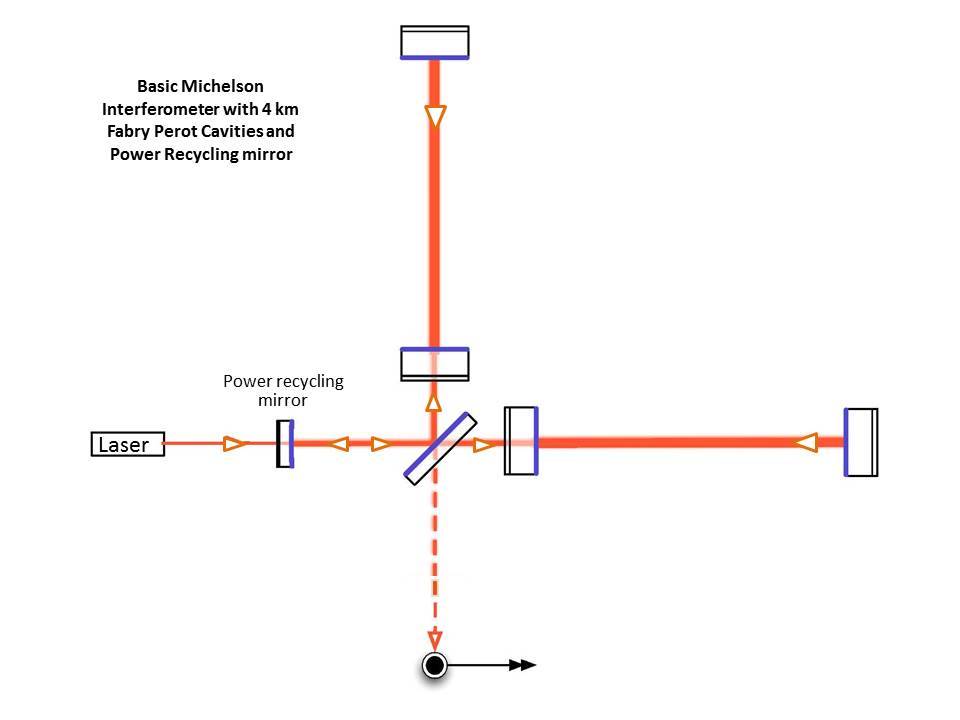
Basic Michelson, image from LIGO
Furthermore, having two separate but identical interferometers makes it more plausible that the observations are not some type of noise but rather the result of an actual gravitational wave. Just like how if both you and your friend remember being at the same party and seeing a guy finish an entire bottle of gin in one sitting and then eat the bottle, it more than likely happened.
Based on the evidence gained, physicists believe that the observed gravitational waves were caused by two massive black holes orbiting each other and combining into one spinning black hole. The data supports the existence of not only gravitational waves, but also of binary stellar-mass black hole systems (i.e., the original two black holes which were spinning around each other). It also constitutes the first observation of the merger of such a system into a single spinning black hole system.
Whew, what a lot of exposition! I feel like more of a hack writer than usual. But why does this mean anything for U of I? It won’t surprise anyone to know that there were more schools involved with the LIGO experiment and this discovery than just Caltech and that lame school in Massachusetts. In particular, the first digital three-dimensional models of a binary black-hole system combining into a single rotating system were generated at University of Illinois at Urbana-Champaign in the National Center for Supercomputing Applications (NCSA). The fact that the NCSA even exists is also heavily due to a U of I professor.
Professor Larry Smarr and seven other professors were the authors of the so-called “Black Proposal” (named for the color of its cover) in 1983, the first unsolicited report accepted and approved by the National Science Foundation (NSF). It resulted in the installation of supercomputers on American university campuses to be used by researchers. Up until this point, the only supercomputers in the United States were hidden behind layers of government bureaucracy and security, unavailable to most scientists. Professors at the time generally had to travel to Europe and use supercomputers there if they needed quick access (for certain definitions of “quick”) to that kind of computing power. The “Black Proposal” would be approved in 1985, funding the eventual establishment of five supercomputers on university campuses in the US, notably Blue Waters at NCSA in C-U in recent years. As an aside, the existence of these supercomputers also directly led to the development of the Mosaic web browser at U of I, the first truly modern web browser (for instance, it used these things called icons instead of just text). In fact, some credit NCSA Mosaic for helping to foster the Internet boom of the 1990s.
In recognition of his work in getting NSF funding to build these supercomputers and the benefits thereof, Professor Smarr was awarded the Golden Goose award by the Association of American Universities back in February of 2014. The award is presented once a year to honor federally-funded research which has lead to major breakthroughs in science. Any researcher who has produced something within the previous 60 years is eligible. The fact that Professor Smarr received this award is a testament to the importance of the NCSA and its capabilities.
When the supercomputer at NCSA was used to create the first 3D simulation of colliding black holes in 1994, gravitational waves were modeled as well. Now, with the first direct observation of gravitational waves at hand, we can assert empirically that Einstein was right and that NCSA was first to model a colliding two-black hole system and the resulting gravitational waves in 3D. Currently, astrophysicists at U of I are still working on modeling such systems and have verified that the observed gravitational waves are very similar to what the models predict.
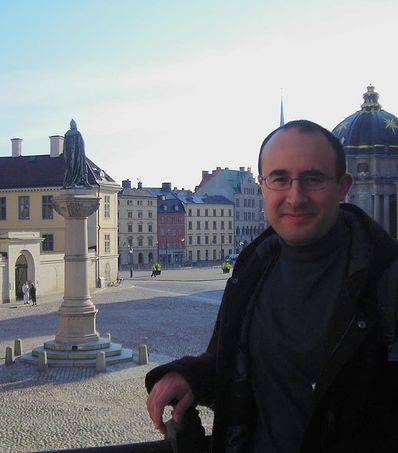
Eliu Huerta, photo from his website.
In addition, Eliu Huerta, an astrophysicist at U of I, is not only a member of the LIGO scientific collaboration, but also a co-author of the paper they’ve published. Now that gravitational waves have been detected, it can only mean that the models can expand in scope in an attempt to model other gravitational wave-producing events.
The big question for a lot of people is “so what?”
OK, so we’ve measured gravitational waves — so what?
OK, so Einstein was right about yet something else — so what?
You have to consider what gravitational waves mean for the future of physics and astronomy. Light and sound travel in waves; we know that. Observing gravitational waves means that as humans, we can effectively “see” in another dimension.
Think about that. We can “see” disturbances of spacetime. This discovery is as revolutionary as a blind species suddenly developing a way to measure light (aka electromagnetic waves). Humankind has found a way to see what has never been seen or experienced directly before, providing us a new way to observe astrophysical phenomena. For instance, black holes are difficult to observe because they emit no light, but now we have a new way to try and observe them. This early, it is difficult to even imagine what gravitational waves will allow us to observe in the future, or what astonishing discoveries are possible with our newly found “sense”, but this is sure to usher in a new era in science.
Top photo of Dr. Larry Smarr from TEDMED.
Check out some of the 30th Anniversary events from the NCSA, notably NCSA Day at Spurlock Museum, happening March 3rd.








